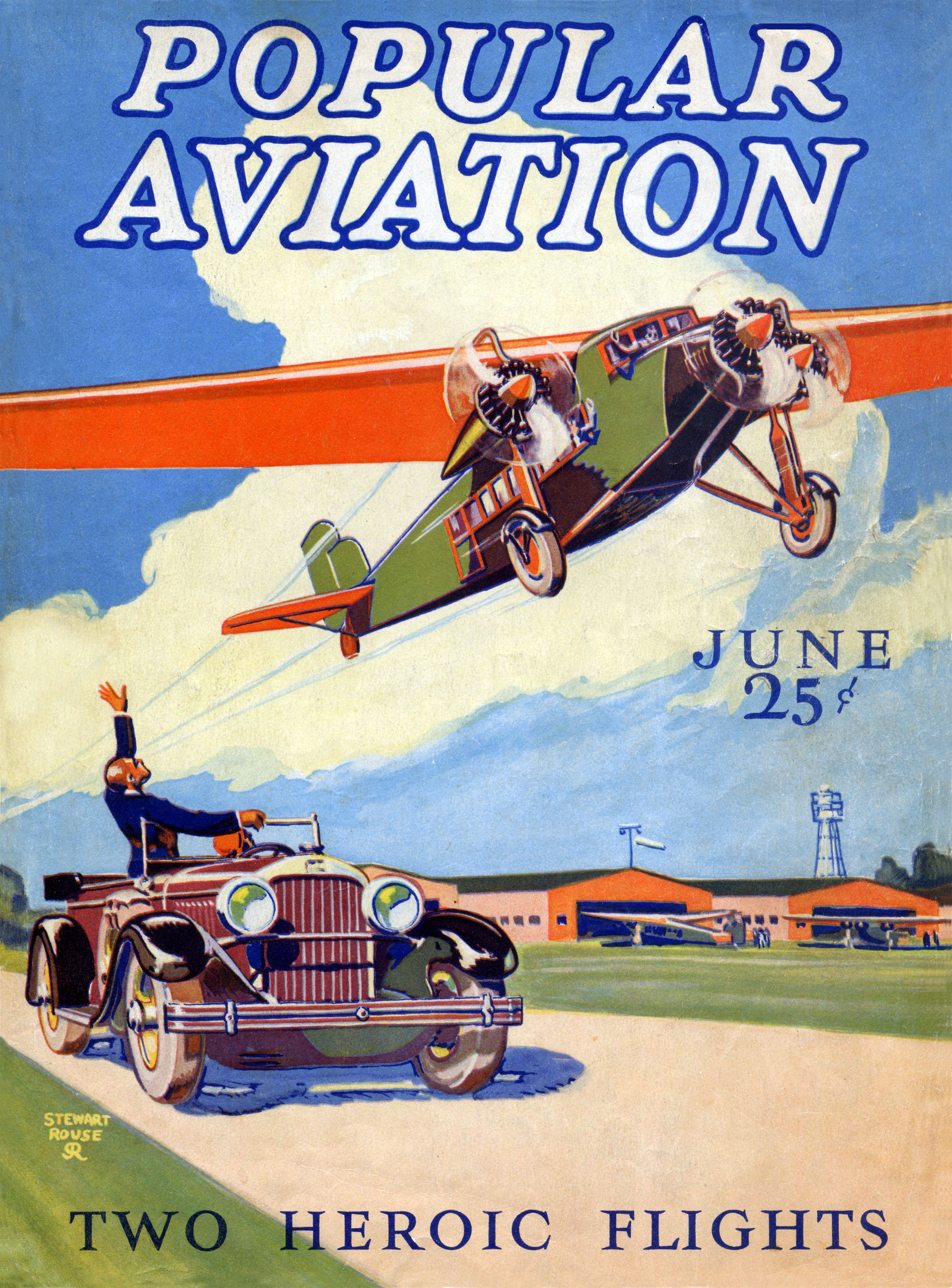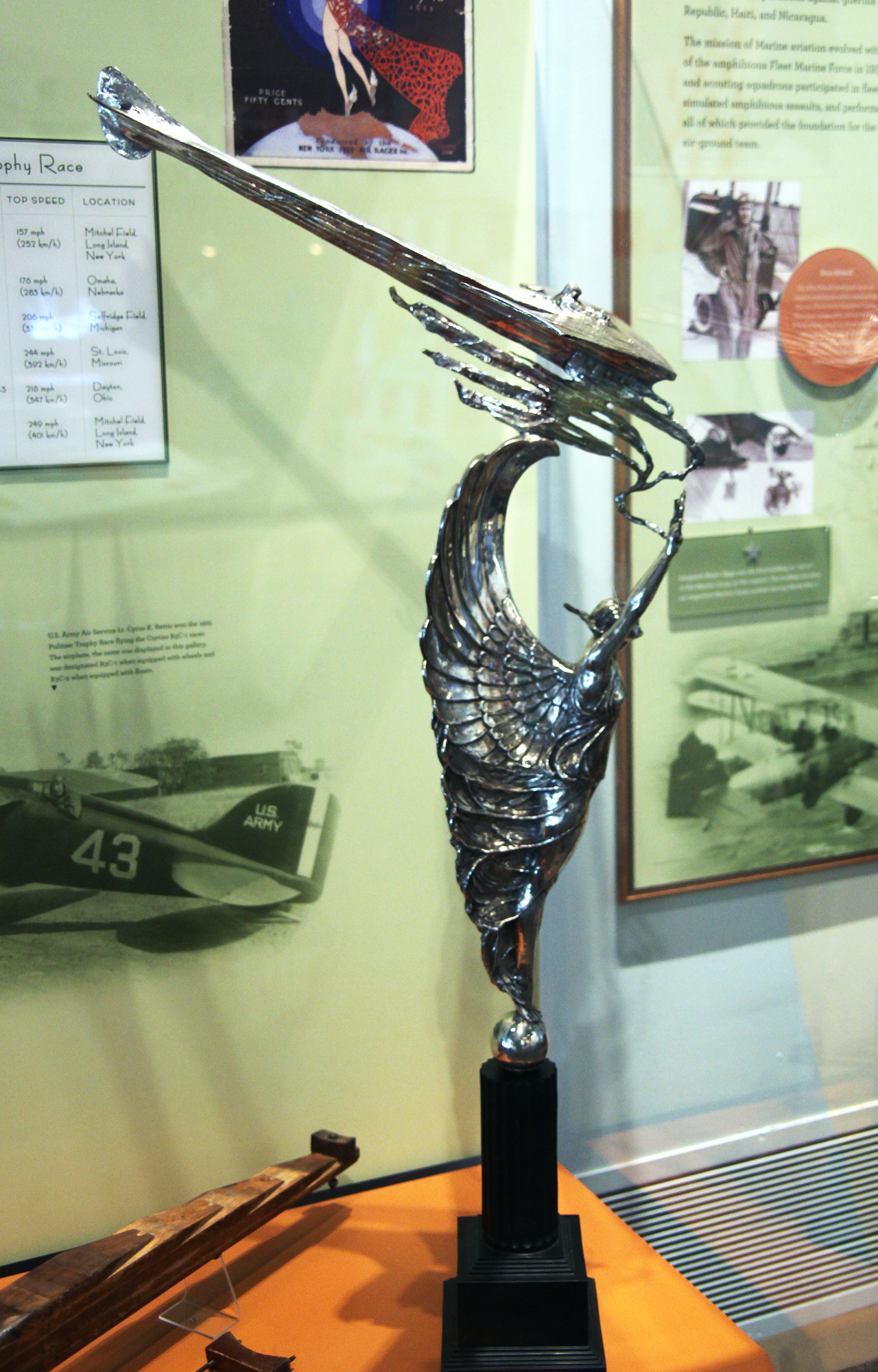|
Alexander Eaglerock Bullet C-4
The Bullet Monoplane or Alexander Eaglerock Bullet was a low wing cabin monoplane that was a departure from traditional biplane aircraft of the era. Design and development The Bullet was built at the beginning of the Great Depression. Company owner J Don Alexander said he was inspired by ducks tucking in their legs to build a retractable landing gear-equipped aircraft. The aircraft experienced stability problems in Spin (flight), spin testing, killing two pilots. Few orders were delivered. The Bullet was a low wing, cabin aircraft with retractable conventional landing gear. The fuselage was constructed with welded steel tubing and the wings were constructed with wooden spar (aviation), spars and Rib (aircraft), ribs, both with aircraft fabric covering. Operational history An Alexander Eaglerock Bullet competed in the 1929 National Air Races. Female pilot Jessie "Chubbie" Keith-Miller won two transcontinental air races piloting an Alexander Eaglerock Bullet. Variants ''Data from ... [...More Info...] [...Related Items...] OR: [Wikipedia] [Google] [Baidu] |
WikiProject Aircraft
A WikiProject, or Wikiproject, is a Wikimedia movement affinity group for contributors with shared goals. WikiProjects are prevalent within the largest wiki, Wikipedia, and exist to varying degrees within Wikimedia project, sister projects such as Wiktionary, Wikiquote, Wikidata, and Wikisource. They also exist in different languages, and translation of articles is a form of their collaboration. During the COVID-19 pandemic, CBS News noted the role of Wikipedia's WikiProject Medicine in maintaining the accuracy of articles related to the disease. Another WikiProject that has drawn attention is WikiProject Women Scientists, which was profiled by ''Smithsonian Magazine, Smithsonian'' for its efforts to improve coverage of women scientists which the profile noted had "helped increase the number of female scientists on Wikipedia from around 1,600 to over 5,000". On Wikipedia Some Wikipedia WikiProjects are substantial enough to engage in cooperative activities with outside organization ... [...More Info...] [...Related Items...] OR: [Wikipedia] [Google] [Baidu] |
Rib (aircraft)
In an aircraft, ribs are forming elements of the structure of a wing, especially in traditional construction. By analogy with the anatomical definition of " rib", the ribs attach to the main spar, and by being repeated at frequent intervals, form a skeletal shape for the wing. Usually ribs incorporate the airfoil shape of the wing, and the skin adopts this shape when stretched over the ribs. Type of ribs There are several types of ribs. Form-ribs, plate-type ribs, truss ribs, closed-ribs, forged ribs and milled ribs, where form-ribs are used for light to medium loading and milled ribs offer the greatest strength. * Form-ribs are made from a sheet of metal bent into shape, such as a U-profile. This profile is placed on the skin, just like a stringer, but then in the other direction. * Plate-type ribs consist of sheet-metal, which has upturned edges and (often has) weight-saving holes cut into it. * Truss ribs are built up out of profiles that are joined together. These joints req ... [...More Info...] [...Related Items...] OR: [Wikipedia] [Google] [Baidu] |
Popular Aviation
Ziff Davis, Inc. is an American digital media and internet company. First founded in 1927 by William Bernard Ziff Sr. and Bernard George Davis, the company primarily owns technology-oriented media websites, online shopping-related services, and software services. History The company was founded by William B. Ziff Company publisher Bill Ziff Sr. with Bernard Davis. Upon Bill Ziff's death in 1953, William B. Ziff Jr., his son, returned from Germany to lead the company. In 1958, Bernard Davis sold Ziff Jr. his share of Ziff Davis to found Davis Publications, Inc.; Ziff Davis continued to use the Davis surname as Ziff-Davis. Throughout most of Ziff Davis' history, it was a publisher of hobbyist magazines, often ones devoted to expensive, advertiser-rich technical hobbies such as cars, photography, and electronics. Since 1980, Ziff Davis has primarily published computer-related magazines and related websites, establishing Ziff Davis as an Internet information company. Ziff Davis ... [...More Info...] [...Related Items...] OR: [Wikipedia] [Google] [Baidu] |
Radial Engine
The radial engine is a reciprocating type internal combustion engine configuration in which the cylinders "radiate" outward from a central crankcase like the spokes of a wheel. It resembles a stylized star when viewed from the front, and is called a "star engine" in some other languages. The radial configuration was commonly used for aircraft engines before gas turbine engines became predominant. Engine operation Since the axes of the cylinders are coplanar, the connecting rods cannot all be directly attached to the crankshaft unless mechanically complex forked connecting rods are used, none of which have been successful. Instead, the pistons are connected to the crankshaft with a master-and-articulating-rod assembly. One piston, the uppermost one in the animation, has a master rod with a direct attachment to the crankshaft. The remaining pistons pin their connecting rods' attachments to rings around the edge of the master rod. Extra "rows" of radial cylinders can be ... [...More Info...] [...Related Items...] OR: [Wikipedia] [Google] [Baidu] |
Wright R-760 Whirlwind
The Wright R-760 Whirlwind was a series of seven-cylinder air-cooled radial aircraft engines built by the Wright Aeronautical division of Curtiss-Wright. These engines had a displacement of 756 in³ (12.4 L) and power ratings of 225-350 hp (168-261 kW). Design and development Wright introduced the J-6 Whirlwind family in 1928 to replace the nine-cylinder R-790 series. The J-6 family included varieties with five, seven, and nine cylinders. The seven-cylinder version was originally known as the J-6 Whirlwind Seven, or J-6-7 for short. The U.S. government designated it as the R-760; Wright later adopted this and dropped the J-6 nomenclature. Like all the members of the J-6 Whirlwind family, the R-760 had larger cylinders than the R-790. The piston stroke of 5.5 in (14.0 cm) was unchanged, but the cylinder bore was expanded to 5.0 in (12.7 cm) from the R-790's bore of 4.5 in (11.4 cm). While the R-790 was naturally aspirated, t ... [...More Info...] [...Related Items...] OR: [Wikipedia] [Google] [Baidu] |
Alexander Eaglerock C-3 Bullet 3-view Aero Digest May 1929
Alexander is a male given name. The most prominent bearer of the name is Alexander the Great, the king of the Ancient Greek kingdom of Macedonia who created one of the largest empires in ancient history. Variants listed here are Aleksandar, Aleksander and Aleksandr. Related names and diminutives include Iskandar, Alec, Alek, Alex, Alexandre, Aleks, Aleksa and Sander; feminine forms include Alexandra, Alexandria, and Sasha. Etymology The name ''Alexander'' originates from the (; 'defending men' or 'protector of men'). It is a compound of the verb (; 'to ward off, avert, defend') and the noun (, genitive: , ; meaning 'man'). It is an example of the widespread motif of Greek names expressing "battle-prowess", in this case the ability to withstand or push back an enemy battle line. The earliest attested form of the name, is the Mycenaean Greek feminine anthroponym , , (/ Alexandra/), written in the Linear B syllabic script. Alaksandu, alternatively called ''Alakasandu' ... [...More Info...] [...Related Items...] OR: [Wikipedia] [Google] [Baidu] |
Comet 7-E
The Comet 7-cylinder radials were a family of air-cooled radial engines, designed and built by the Comet Engine Corporation at Madison, Wisconsin from around 1927. Design and development Comet designed the 7-cylinder radial series to take advantage of the boom in private aviation in the late 1920s; intending to replace the large number of relatively unreliable wartime surplus engines that flooded the market in the early 1920s. First produced by the Aircraft Engine Corporation of Oakland, California, new interests acquired the California company and the Comet Engine Corporation was formed under the sponsorship of Air Investors Inc., the Crocker First Company of San Francisco and the Gisholt Machine Company. Production transferred to workshops adjacent to the Gisholt Machine Company in Madison, which acted as production supervisor. The Comet radial was fairly standard with steel finned cylinders, cast light alloy cylinder heads and two valves per head. The valves are operated by ... [...More Info...] [...Related Items...] OR: [Wikipedia] [Google] [Baidu] |
National Air Races
The National Air Races (also known as Pulitzer Trophy Races) are a series of pylon and cross-country races that have taken place in the United States since 1920. The science of aviation, and the speed and reliability of aircraft and engines grew rapidly during this period; the National Air Races were both a proving ground and showcase for this. History In 1920, publisher Ralph Pulitzer sponsored the Pulitzer Trophy Race and the Pulitzer Speed Trophy for military airplanes at Roosevelt Field, Long Island, New York, in an effort to publicize aviation and his newspaper. The races eventually moved to Cleveland, where they were known as the Cleveland National Air Races.''about the Reno Air Racing Association'' Retrieved 2010-03-10. They drew the best flyers of the time, including [...More Info...] [...Related Items...] OR: [Wikipedia] [Google] [Baidu] |
Aircraft Fabric Covering
Aircraft fabric covering is a term used for both the material used and the process of covering aircraft open structures. It is also used for reinforcing closed plywood structures. The de Havilland Mosquito is an example of this technique, as are the pioneering all-wood monocoque fuselages of certain World War I German aircraft like the LFG Roland C.II in its wrapped ''Wickelrumpf'' plywood strip and fabric covering. Early aircraft used organic materials such as cotton and cellulose nitrate dope; modern fabric-covered designs usually use synthetic materials such as Dacron and butyrate dope for adhesive. Modern methods are often used in the restoration of older types that were originally covered using traditional methods. Purpose/requirements The purposes of the fabric covering of an aircraft are: * To provide a light airproof skin for lifting and control surfaces. * To provide structural strength to otherwise weak structures. * To cover other non-lifting parts of an aircr ... [...More Info...] [...Related Items...] OR: [Wikipedia] [Google] [Baidu] |
Spar (aviation)
In a fixed-wing aircraft, the spar is often the main structural member of the wing, running spanwise at right angles (or thereabouts depending on wing sweep) to the fuselage. The spar carries flight loads and the weight of the wings while on the ground. Other structural and forming members such as ribs may be attached to the spar or spars, with stressed skin construction also sharing the loads where it is used. There may be more than one spar in a wing or none at all. Where a single spar carries most of the force, it is known as the main spar. Spars are also used in other aircraft aerofoil surfaces such as the tailplane and fin and serve a similar function, although the loads transmitted may be different from those of a wing spar. Spar loads The wing spar provides the majority of the weight support and dynamic load integrity of cantilever monoplanes, often coupled with the strength of the wing 'D' box itself. Together, these two structural components collectively prov ... [...More Info...] [...Related Items...] OR: [Wikipedia] [Google] [Baidu] |
WikiProject Aircraft/page Content
A WikiProject, or Wikiproject, is a Wikimedia movement affinity group for contributors with shared goals. WikiProjects are prevalent within the largest wiki, Wikipedia, and exist to varying degrees within sister projects such as Wiktionary, Wikiquote, Wikidata, and Wikisource. They also exist in different languages, and translation of articles is a form of their collaboration. During the COVID-19 pandemic, CBS News noted the role of Wikipedia's WikiProject Medicine in maintaining the accuracy of articles related to the disease. Another WikiProject that has drawn attention is WikiProject Women Scientists, which was profiled by ''Smithsonian Magazine, Smithsonian'' for its efforts to improve coverage of women scientists which the profile noted had "helped increase the number of female scientists on Wikipedia from around 1,600 to over 5,000". On Wikipedia Some Wikipedia WikiProjects are substantial enough to engage in cooperative activities with outside organizations relevant to ... [...More Info...] [...Related Items...] OR: [Wikipedia] [Google] [Baidu] |



.jpg)

